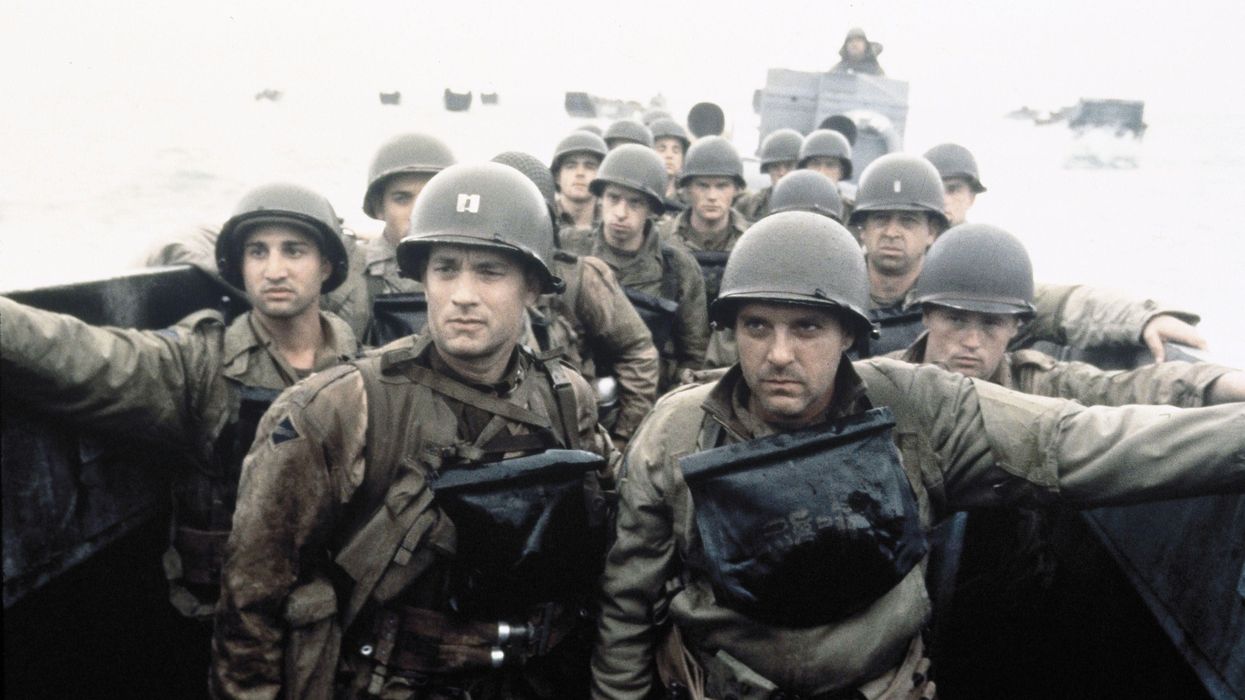Breaking Down the Omaha Beach Scene in Steven Spielberg's 'Saving Private Ryan'
It's loud, it's long, and it depicts the horror of war in ways we never thought would hit the big screen.

'Saving Private Ryan'
In the vast landscape of cinematic history, few directors have managed to leave as indelible a mark as Steven Spielberg. He's one of those names that gets me to race to the theater to see whatever is showing.
A few years ago, I finally got to see Saving Private Ryan on the big screen, and it was so immersive and harrowing that I felt like the movie was cast into a new light.
when it came to picking a scene from this movie to break down, I felt like I could not ignore its opening, outside of the bookend, that thrusts us into battle.
The harrowing depiction of the D-Day landings at Omaha Beach not only redefined the war genre, but also showcased Spielberg's unparalleled skill in bringing the visceral realities of war to the big screen.
In this article, we delve into the intricacies of this iconic scene, exploring how Spielberg's direction, combined with innovative cinematography, sound design, and emotional storytelling, created a cinematic experience that remains etched in the annals of film history.
Let's get started.
Some Facts About the Omaha Beach Scene in Steven Spielberg's 'Saving Private Ryan'
 'Saving Private Ryan'Credit: Paramount Pictures
'Saving Private Ryan'Credit: Paramount Pictures Spielberg aimed for historical accuracy while making this movie. He consulted with war veterans and historians to ensure the portrayal of the Omaha Beach assault was as close to the real event as possible.
The Omaha Beach scene took about four weeks to shoot, a significant portion of the film's shooting schedule. Obviously, you don't want to film on the actual beach, that would be a little gross, so the scene was filmed in Ireland on the coast of County Wexford.
Spielberg, known for his realism, hired amputee actors and used special effects makeup to simulate traumatic injuries. He also opted for practical effects over CGI to enhance the scene's realism. This included using real explosives and hundreds of extras.
Hand-held cameras were extensively used to give the scene a chaotic, documentary-style feel, immersing viewers in the action. The Omaha Beach scene set a new standard for war films, influencing how combat was depicted in subsequent movies.
Breaking Down the Omaha Beach Scene in Steven Spielberg's 'Saving Private Ryan'
Steven Spielberg is renowned for his storytelling and innovative filmmaking. He's my favorite director because I feel like he knows how to feel emotions along with the audience, and translate them to visuals better than anyone else.
Of course, the Omaha Beach scene in Saving Private Ryan is no different. It transports us to a horrifying moment in time as we see "war is hell" in all of its violent grandeur.
So let's break it down together.
- Setting and Context: The scene is set on Omaha Beach during the D-Day landings of World War II. It follows the experiences of Captain John Miller (played by Tom Hanks) and his squad as they land on the beach facing intense German fire. This harrowing sequence sets the tone for the film's exploration of the brutal realities of war. The context here is that everyone knows about world War II, but few people know the brutality and horrors seen. Starting your movie this way shakes up the narrative and forces the audience to lean in.
- Cinematography and Camera Work: Spielberg used a handheld camera technique to immerse the audience in the chaos of the landing. The camera shakes, dips, and weaves, mimicking the perspective of a soldier on the battlefield. This approach creates a sense of realism and immediacy, placing viewers in the midst of the action. This matching of the camera to the mood is something newer filmmakers often overlook. Take your time and make shots matter.
- Sound Design and Score: The sound design is meticulously crafted to enhance the realism. The deafening sounds of gunfire, explosions, and shouts create an overwhelming sensory experience. Spielberg also uses periods of muffled sound to depict the disorientation experienced by the soldiers. The score by John Williams is deliberately subdued, allowing the sounds of the battlefield to take precedence.
- Use of Violence and Realism: The scene is noted for its graphic depiction of violence. Spielberg doesn't shy away from showing the gruesome realities of war, including bloodshed, injuries, and death. This unflinching portrayal was a departure from the more sanitized war movies of the past and contributed to the film's emotional impact. there is no hiding or shying away from reality here. and when you dig into the theme of the movie, this directly relates to it and gives us a shorthand for what is to follow.
- Emotional Impact and Character Focus: Amid the chaos, the focus on individual soldiers, especially Captain Miller, adds an emotional layer to the scene. The audience witnesses the horror of war not just on a grand scale but also through the eyes of individual characters, making the experience more personal and harrowing. There are many people on this beach, but we see it through captain Miller's eyes and his emotional core.
- Historical Accuracy and Impact: The Omaha Beach scene is widely praised for its historical accuracy. Veterans of D-Day commended the film for realistically depicting the horrors of the landing. This authenticity helped in educating audiences about the realities of war, beyond the glorified versions often seen in media. If you're going to make a movie based on real life, do exhaustive research and get things right.
This opening sequence of Saving Private Ryan is a powerful example of Spielberg's ability to combine technical skill with emotional storytelling, creating a visceral and unforgettable cinematic experience that honors the sacrifices of soldiers in World War II.
This scene's lasting impact on audiences and filmmakers alike is a testament to Spielberg's genius and his commitment to bringing depth, realism, and emotional resonance to his work.
Let me know what you think in the comments.
- How Does Steven Spielberg Block and Shoot a Scene? ›
- What Is Three Act Structure in Film and TV? ›
- How Steven Spielberg's Battlefield Camera Captures Chaos with Clarity ›













